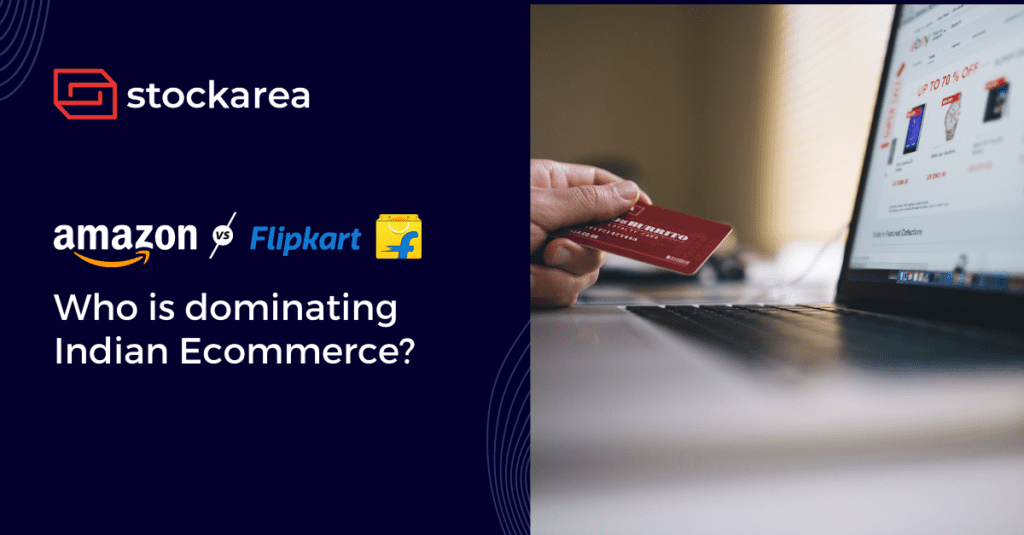Flipkart and Amazon are India’s two largest e-commerce platforms. Flipkart is a domestic player because it is an Indian firm that operates exclusively in India. In contrast, Amazon is a global company that operates in practically every major country. In recent years, Flipkart has grown a strong presence in India, becoming the country’s largest e-commerce platform. However, ever since Amazon entered India, it has been growing at a breakneck pace in popularity and service.
Flipkart is the most trusted, but Amazon offers a superior shopping experience in India. While Flipkart features trusted Indian brands, Amazon’s user experience is unmatched and outstanding. Thus, Flipkart and Amazon are both rather well-known ecommerce brands in India. Thus, let us compare India’s two largest e-commerce websites, Flipkart and Amazon, and observe how they compete in various sectors or categories.
Feature Comparison
1. Collection of Products
Both of these e-commerce websites include a sizable product selection. Flipkart may have a little advantage due to its longevity. Both websites provide a diverse range of products, including electronics, computers, apparel, sports, health, and cosmetics, as well as books and tools. Their breadth and variety of items are suitable for every category, allowing the user to select from a diverse selection of possibilities. Thus, Amazon and Flipkart are neck and neck in product collections.
2. User Interface
While both sites have essentially almost identical front-end user interfaces, the user experience on Flipkart when ordering, checking out, and making a payment is far simpler than on Amazon. But Amazon is more clear, practical, and user friendly, and because it lacks the gimmicks that Flipkart has, the site is quicker and lighter. Amazon’s graphical user interface is clutter-free and welcoming, which improves the customer experience. Therefore, it can fit more results on a single page because each result is smaller, which isn’t the case with Flipkart.
3. Delivery & shipping
Both Amazon and Flipkart have their courier services for goods delivery. Flipkart uses Ekart as its delivery service, while Amazon utilizes ATS (Amazon Transportation Services). The courier service used by these e-commerce businesses is practically identical in terms of quality and reliability.
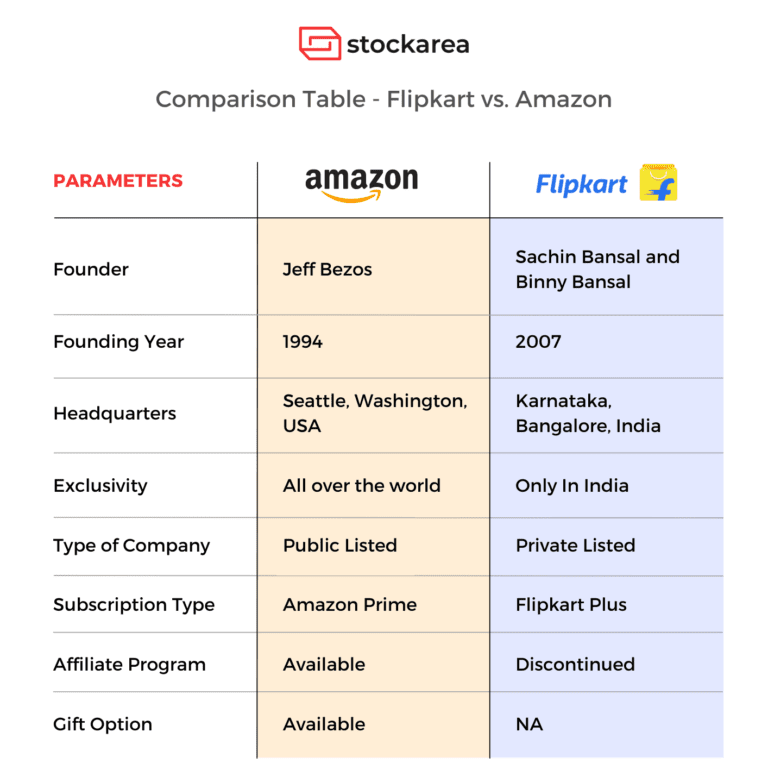
4. Customer care
When it comes to offering superior customer service, Amazon has a leg up on Flipkart. Customer care representatives at Amazon respond immediately to your calls and make every effort to resolve your issues as quickly as possible. On the other hand, Flipkart receives several complaints regarding its customer support representatives, who frequently attempt to avoid resolving your difficulties.
5. Payment Methods
Both Amazon and Flipkart accept payments via a variety of options, including Internet Banking, Gift Cards, Cash on Delivery, and Wallet. Both platforms also support credit/debit card payments via Visa, MasterCard, Maestro, and American Express.
Flipkart offers a credit borrowing option called Flipkart Pay Later, enabling selected customers to get credit and check out items without submitting payment information. Amazon, too, has a comparable payment option called Amazon Pay EMI, which gives easy access to credit for online shopping.
6. Value Added Services
Certain products on Amazon are offered as Gifts, which means Amazon will package the product as a gift along with a gift note written by you to the recipient. This feature, however, is not available on Flipkart.
Online subscriptions such as Amazon Prime and Flipkart Plus have exploded in popularity as the internet’s reach grows at a breakneck pace. Both Flipkart and Amazon now offer their customers subscription models, charging a yearly fee for the option of accessing additional services and advantages.
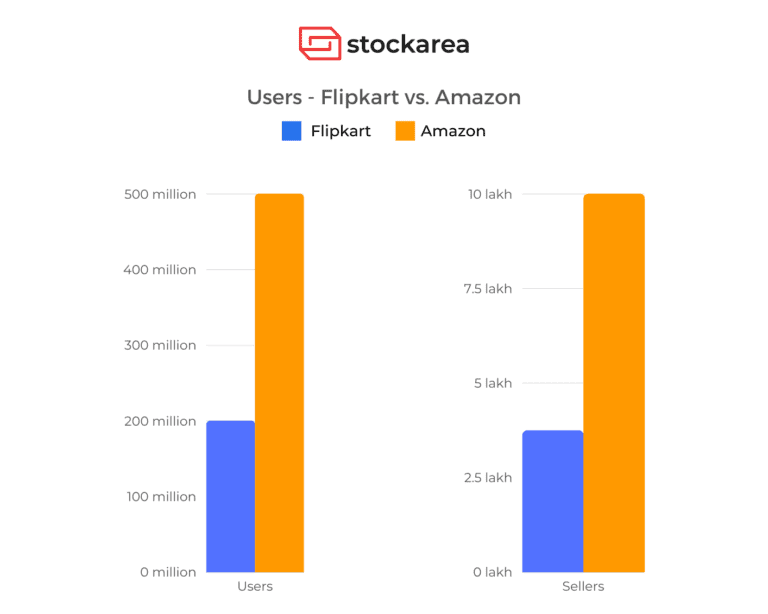
Regulatory hurdles faced by the brands
Flipkart benefits from being a domestic company, which means it has fewer legal restraints. Amazon’s performance is remarkable compared to its debut in 2013, a late start, and a series of regulatory difficulties. Following the government’s announcement of direct investment, the company is catching up with the domestic competition. This has contributed to the company’s success in meeting Indian aspirations for personalization.
The battle for hyper-locality
Last year, the two corporations continued to compete for a significant portion of the hyperlocal market. Flipkart unveiled its new programme, FarmerMart, in response to Amazon Fresh’s entry into the food and grocery delivery industry. FarmerMart aims to give Amazon a run for its money. While the programme has not yet been launched, it poses a significant threat to established e-commerce companies in the same market due to its aspirations to sell grocery products.
Flipkart beats Amazon in revenue
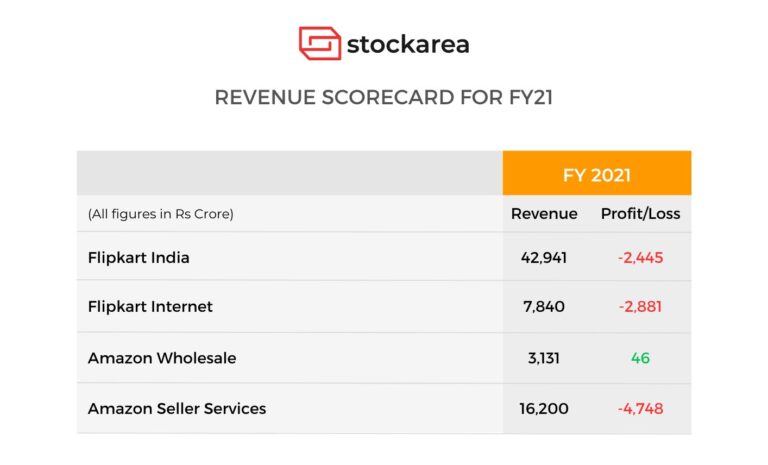
Flipkart and Amazon, two e-commerce rivals, both experienced significant growth in the last fiscal year. Flipkart India’s revenue from operations increased 25% to Rs 42,941 crore, while its losses decreased 22% to Rs 2,445 crore. Meanwhile, Amazon India marketplace increased revenue from operations by 49 percent to Rs 16,379 crore in FY21, net loss decreased 19 percent to Rs 4,748 crore, while total expenses increased to Rs 21,127 crore.
How Will The Ecommerce War Between Amazon and Flipkart Play Out?
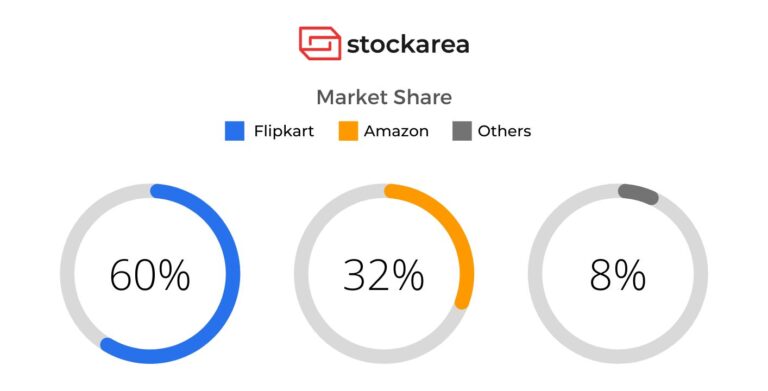
With the Indian government announcing a new framework for preventing cross-border data movement, regulating taxation, facilitating the expansion of the digital economy, and putting an end to product counterfeiting, the two companies will need to be highly adaptable in the coming year. Though they have previously been forced to make considerable modifications to their operations and setup, they may again find themselves in the same situation. With the two expanding into different channels such as hyper-local delivery, OTT platforms, and e-wallets, they must adhere to strict data privacy standards to compete in India’s of the world’s largest e-commerce markets.
Related posts
- Beginners Guide To Sell On Amazon In 2024
- 7 Pro Tips To Increase Amazon Sales
- E-commerce Packaging: The Ultimate Guide
- What Is An Online Marketplace?
- 10 Key Benefits Of Ecommerce For Your Business
- Dropshipping Vs E-Commerce Fulfillment: Which Is Best For Online Seller?
- How To Sell On Snapdeal In 2024
- How To Sell On Meesho? Ultimate Guide For Beginners
- An Ultimate Guide For Beginners To Sell On Flipkart
- How To Start Selling On Paytm In 2024
- Flipkart Seller Login [2024 Updated]
- Complete Guide On Amazon Seller Central
- 7 Proven Ways To Boost Flipkart Sales
